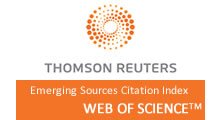Application of Augmented Reality in Chemistry Education: A Systemic Review Based on Bibliometric Analysis from 2002 to 2023
218
146
Abstract
This extensive bibliometric analysis examines Augmented Reality (AR) adoption and its effects on chemistry education from 2002 to 2023. AR's interaction, three-dimensional visualizations of molecular structures and reactions prove as a promising method for chemical concepts that are ever-increasingly sophisticated and for educational methods that tend to be less on repetition and more engagement. AR, by supplementing digital elements into the real world, enhances the visualization of more abstract chemical principles. VOSviewer and Biblioshiny were implemented for the visualization and analysis of Scopus database scholarly articles, conference proceedings, and educational case studies. Using this approach, relevant trends, themes, and the development of AR applications in chemistry education have been revealed. It is, therefore, obvious that the integration of AR in chemistry curricula has increased by far since the comprehension and student engagement in chemistry improved. AR applications improved spatial reasoning, which helps students understand molecular geometries and chemical reactions. This analysis shows that AR can be used for augmented textbooks and immersive lab simulations, demonstrating its educational flexibility. AR is a major step toward interactive and effective chemistry literacy. The study highlights AR in chemistry education and addresses emerging issues that will advance this dynamic field.
Keywords
Augmented Reality, Chemistry Education, Bibliometric Analysis, VOSviewer, Systemic Review
Full Text:
PDFReferences
Duc, N.M. & Guang, N.V. (2024). Application of augmented reality in chemistry education: A systemic review based on bibliometric analysis from 2002 to 2023. International Journal of Education in Mathematics, Science, and Technology (IJEMST), 12(6), 1415-1434. https://doi.org/10.46328/ijemst.4265
DOI: https://doi.org/10.46328/ijemst.4265
Refbacks
- There are currently no refbacks.
Copyright (c) 2024 International Journal of Education in Mathematics, Science and Technology







International Journal of Education in Mathematics, Science and Technology (IJEMST)

This work is licensed under a Creative Commons Attribution-NonCommercial-ShareAlike 4.0 International License.
ISSN: 2147-611X (Online)
